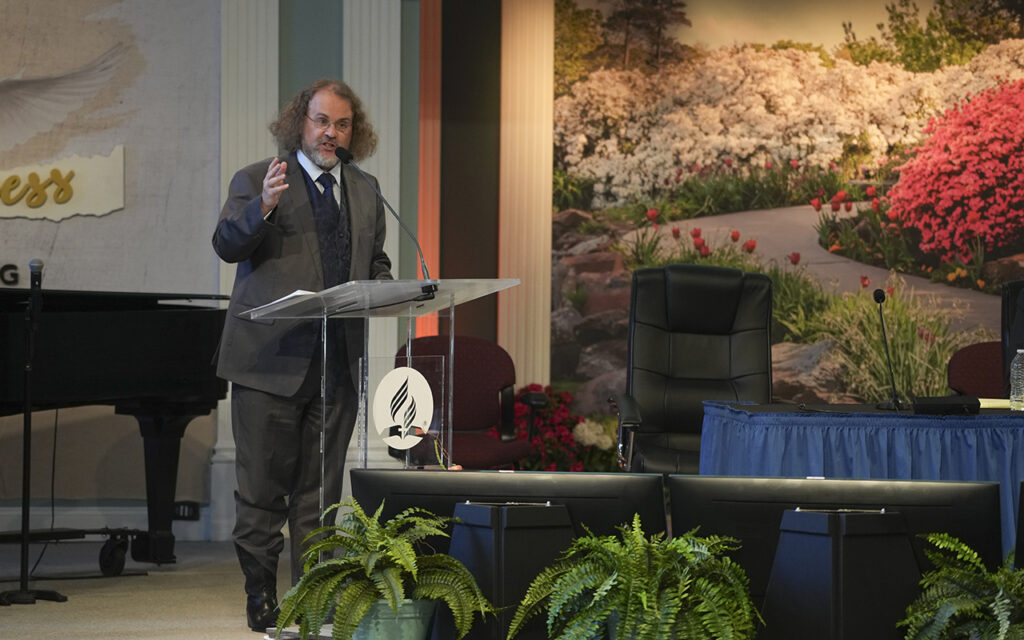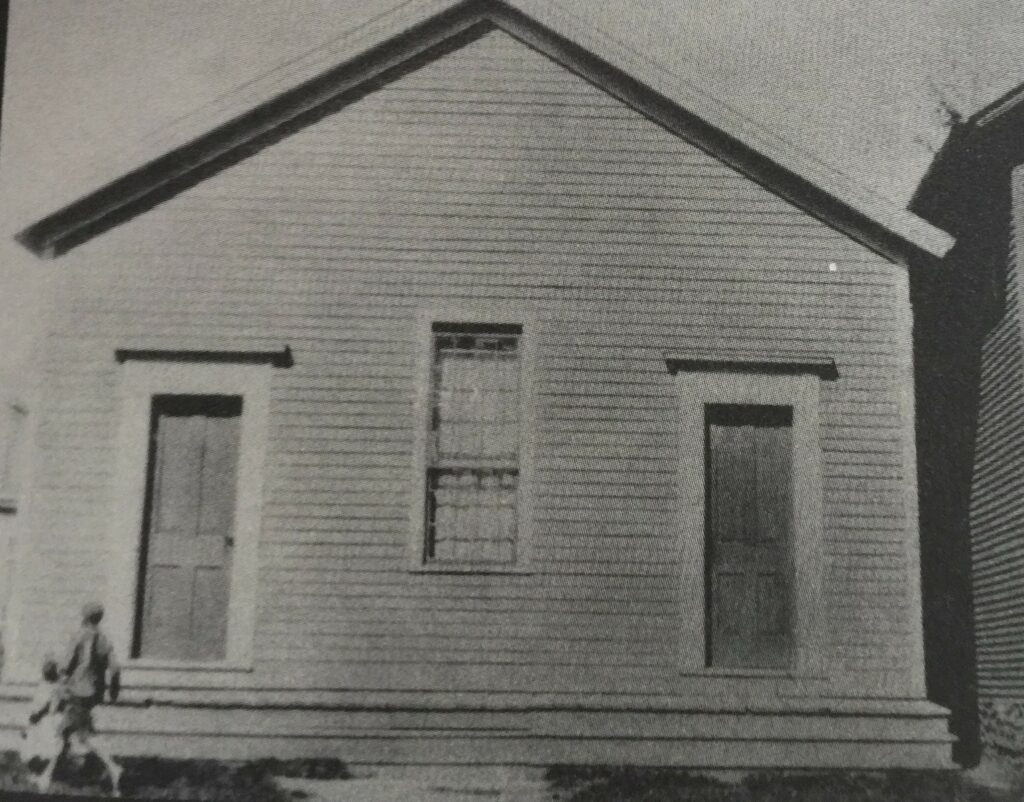‘Chosen for Mission’ Theme Will Inform 160th Anniversary Celebration
The Seventh-day Adventist Church organization will turn 160 on May 21.
April 15, 2023 | Silver Spring, Maryland, United States | Marcos Paseggi, Adventist Review
Seventh-day Adventist Church leaders highlighted the upcoming 160th anniversary of the official organization of the church during the General Conference (GC) Executive Committee Spring Meeting in Silver Spring, Maryland, United States, on April 11. Through brief presentations, GC secretary Erton Köhler and Office of Archives, Statistics, and Research director David Trim called leaders and members to keep moving forward as they celebrate the church beginnings and its legacy.
“I’d like to think that healthy organizations move forward looking [through] their windshield while at the same time look[ing] at the rear-view mirror,” Köhler said. “It’s our reality. We have to move forward; we have dreams for the future; we have our blessed hope. But we need to pay attention [to] what we can learn about our past.” The Adventist Church organization will turn 160 on May 21.
Following Proper Procedure

David Trim, director of the Adventist Church’s Office of Archives, Statistics, and Research, presents the particulars of the formal foundation of the General Conference, which turns 160 this year. [Photo: Enno Müller, Adventist Media Exchange (CC BY 4.0)]
He added that some members of the local Battle Creek Adventist church, including Ellen G. White, attended as onlookers. “They were not official delegates … but were interested observers of proceedings.”
Trim stated that the first action of the 20 delegates was to elect a temporary chairman and a secretary. They elected Jotham M. Aldrich as chairman and Uriah Smith as secretary.
“Aldrich was 35 years old and had only converted in 1860,” Trim said. “He had not been a Millerite. Smith was just 31, and, remarkably, was not a delegate.”
This is worth pointing out, Trim said, because those two facts give us important insights into the founding of the Adventist Church. “Many of [the delegates] were young, and they were not snobbish nor exclusive,” Trim said. “Our founders looked for spiritual gifts, and when they saw talent, they would use it to spread the third angel’s message.”
Having elected a chairman and a secretary, the delegates and onlookers joined in singing Hymn 233, “Long Upon the Mountains,” from the new hymnbook James White had published in 1861. Then a three-delegate committee inspected and verified the credentials of the delegates.
Again, Trim believes these details give glimpses into the founders of the General Conference. “They liked to sing hymns, and they valued proper procedure and committees. So, some characteristics of the Seventh-day Adventist Church go back to the very origins,” he quipped.

Second meeting house at Battle Creek, where the Seventh-day Adventist Church was organized on May 21, 1863. [Photo: General Conference of Seventh-day Adventists Archives]
That evening of May 20, the delegates decided to adjourn the session until the following morning. The next day, Thursday, May 21, 1863, “was the big day,” Trim said.
The first step was the selection of eight delegates to draft a constitution. “They reported back so promptly and with so detailed a constitution that preliminary work must have been done by a small group before the session convened,” Trim explained. The constitution was then approved unanimously, and the General Conference of Seventh-day Adventists was thus formally founded.
The original structure included conferences as constituencies, annual GC sessions, and three permanent officers — a president, a secretary, and a treasurer. There was also an executive committee of three, of which the president was one.
Organized for Mission
Trim noted that the constitution that was adopted began with a preamble. “Many years later, it was dropped, but it is important because it says why a General Conference was being established,” Trim said, and read, “For the purpose of securing unity and efficiency in labor and promoting the general interests of the cause of present truth.”
He explained how Article V was specifically concerned with missionary activity. It provided that the executive committee was to have “ ‘the special supervision of all missionary labor, and as a missionary board shall have the power to decide where such labor is needed, and who shall go as missionaries to perform the same,’ ” Trim read, adding, “The purpose of the General Conference, in sum, was to promote unity, identity, and mission.”
Köhler followed Trim to highlight the significance of those three words for Seventh-day Adventists. “Those three words [unity, identity, mission] … are behind our celebration,” he said. “Our theme is ‘Chosen for Mission.’ This is the reason why God raised this church, and we need to highlight it to everybody.”
He also reminded Adventist leaders that the upcoming 2023 celebration will warm up the Adventist Church for another major milestone: the 150 years of Adventist Mission — the sending of the first church missionary overseas — that the church is planning to highlight in 2024. “The celebration of this year will prepare the way for next year’s celebration,” Köhler said. “God organized this church to fulfill [His] mission.”
It has been a long road from the original 3,500 church members and six conferences in 1863 to the 22.2 million baptized members in 212 countries, the 97,811 churches, and the current 753 conferences and missions, he highlighted. And it is something worth noting. “The past is a place of reference, not for residence,” Köhler said. “But yes, we must celebrate our legacy [as we stay] focused on unity, identity, and mission.”